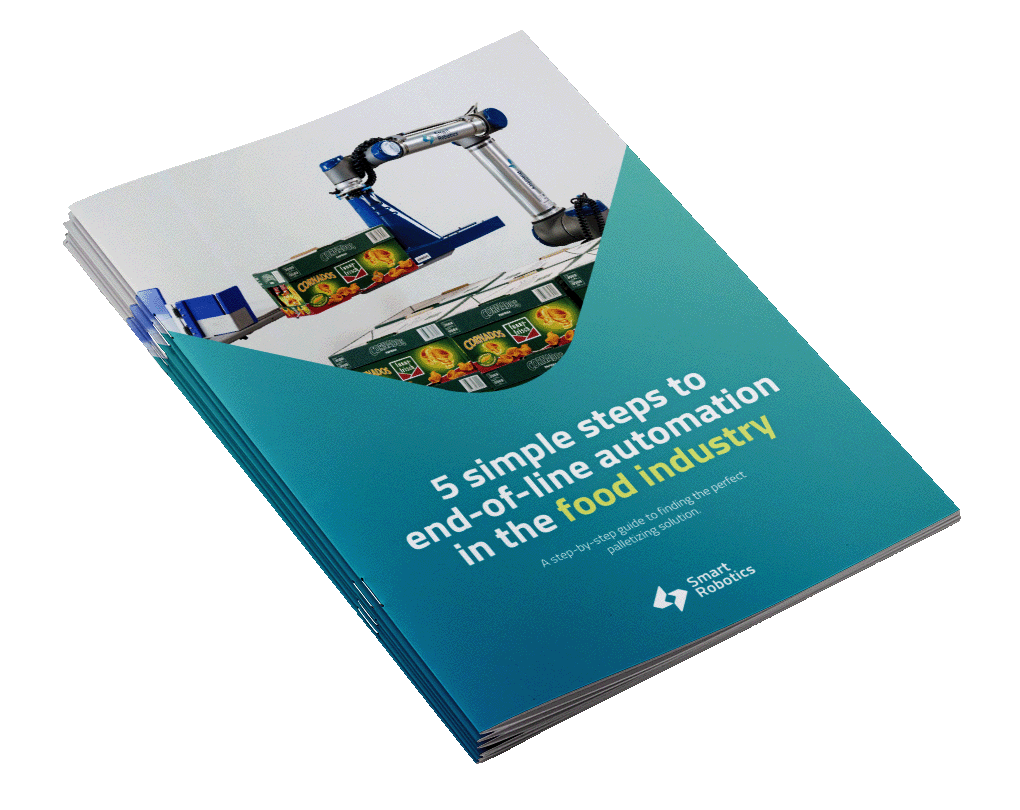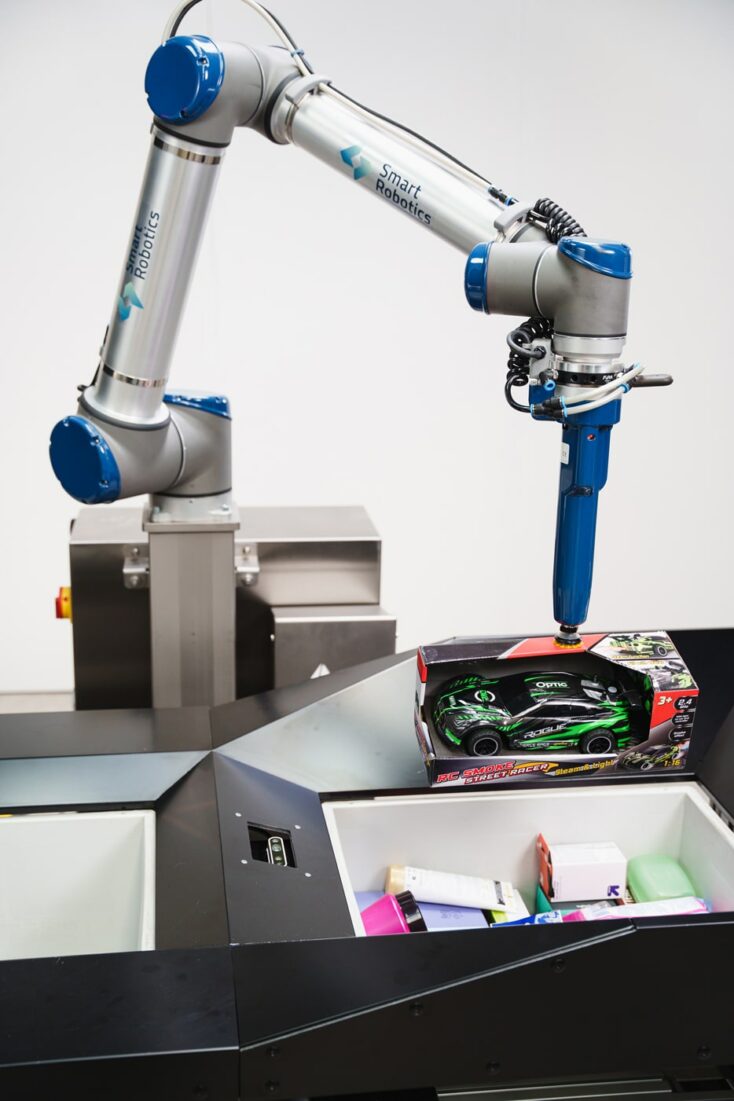5 reasons why end-of-line automation in the food industry is key
Over the past years, the food industry has experienced massive growth. Demand has risen through the roof and the need for variety keeps increasing. As global labor shortages are growing, there is a definite need for automation in the food industry. Implementing robots or cobots in your food production processes can help. But where does one start?
Palletizing automation is the perfect first step
A quick-and-easy improvement is to focus on automating your end-of-line process with a cobot. A task such as palletizing is easy to automate as it is repetitive and monotonous. Perfect for a cobot! To find the perfect palletizing solution for your end-of-line process, it is important to first analyze your process and determine where improvements can be made.
The following statements can help you decide what end-of-line challenges can be improved through automation. Take a look and see what statements apply to your food production process:
1. We struggle with high labor shortage
The globally increasing labor shortages also affect the food industry. Many food production and food processing organizations struggle to find employees for their production process. Think about whether this has affected your palletizing process. Do you have enough employees available for your palletizing process? Are you struggling to find new employees?
2. We deal with high labor costs
As labor shortages are growing and labor becomes harder to find, the costs of labor will automatically rise. People have many jobs to choose from and will go for the jobs offering better pay and benefits. Hence, to remain competitive in the labor market you need to offer good benefits to your employees, resulting in higher labor costs.
3. We encounter high sick leave and employee turnover
Palletizing is a repetitive and monotonous task and can make employees feel unmotivated. In addition, it is a very physically demanding task which may result in work-related injuries. All this can possibly lead to a high sick leave and employee turnover in your palletizing process. Ask yourself; are my employees struggling with the heavy and repetitive work of palletizing? Do we experience a lot of work-related injuries amongst our employees?
4. We experience a lack of efficiency and quality
Of course, it is important to also consider the efficiency and quality of your palletizing process. As palletizing is such a straining and monotonous task, your employees could make mistakes, especially at the end of a shift when they are tired. Consider the following: are your employees able to keep up with the speed of the production line? Can they palletize in an orderly and consistent way? Are they handling products carefully?
5. Our employees are not fully utilizing their skills
Palletizing is not a very challenging task that, as mentioned before, and can lead to unmotivated employees. Employees are not fully utilizing the skills people are good at, such as creativity and problem solving. As labor shortages and labor costs are such a problem within the food production industry, would you not rather have your employees focus on tasks that require human skills?
Improve efficiency and quality with a palletizing cobot
If your end-of-line process deals with (some of) the challenges above, then it might be time to implement automation. Purchasing or even hiring a palletizing cobot will help you improve the efficiency and quality of your end-of-line process, whilst your employees can focus on tasks better suited to their skill set. Win-win, right? But, how do you find the perfect solution for your end-of-line process? Check out the white paper below.
Download our free white paper
Learn all about the 5 simple steps towards end-of-line automation in the food industry. Leave your contact details and download the white paper for free.






